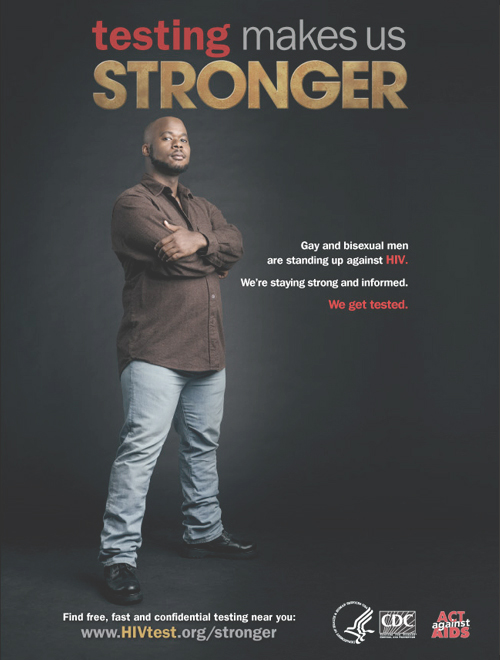National HIV Testing day officially turns 18 today. While some changes in this space, such as drug cocktails and at-home HIV testing kits, can make it appear that the virus has become somewhat normalized, it’s not going away. But talking with marketers shows that agencies are still struggling to help patients—and potential patients—overcome the stigma associated with the disease and to raise individuals’ comfort level with testing and the need to possibly share or acknowledge deeply private information.
Recent Centers for Disease Control data shows that HIV infection rates have held steady across all age and ethnic groups between 2008 and 2010, and that African Americans remain “disproportionately affected by HIV infection.” The CDC says this comes down to African American’s having an infection rate of just under eight times that of whites. Hispanics are also disproportionately affected by the disease. The CDC says new HIV infections among Hispanics amounted to over 21% of new cases between 2008 and 2010. Across all ethnic groups, the highest rate of infection has been among 25-to-34-year-olds, who accounted for 31% of new infections, followed by the 12-to-24 age group, which made up 26% of new infections.
“It’s about sexuality, it’s about revealing things about ourselves,” Digitas Health executive creative director Craig Douglass told MM&M. Douglass said that messages that take a clinical approach to the disease can ease around sensitivities, and allow frank discussion and action.
He’s seeing a “more matter-of-fact approach to the virus,” such as talking about it terms of a virus that is not just infecting an individual, but what he calls the “idea of a community or communal viral load.” He says the get-tested message is a talking point that shows there “is a way for us all to participate…for some of us it’s as simple as knowing our status.”
The CDC’s June 27 National Testing Day materials, which lead with “Testing makes us stronger,” support this perspective. The agency is offering free tests and provides a testing center locator. The research and health organization’s 2013 HIV messaging also notes that 33% of bisexual and gay African-American men are infected and 59% “don’t even know it because they’ve never been tested or aren’t testing enough.”
The CDC’s messaging to African-American women is slightly different, using the call to action “Take Charge. Take the Test,” and telling women that knowing their status can help them care for themselves and their families. The Greater Than AIDS effort, which is currently supported by VH1 and singer Alicia Keyes, takes a similar approach, telling readers “We are empowered” and that “As mothers, daughter, sisters, friends and partners and people living with HIV, we have the power to change the course of the disease.” The effort is backed by CDC, Elton John AIDS Foundation, Ford Foundation and The Black AIDS Institute among others.
The CDC is encouraging testing among gay and bisexual Hispanic men through individual and communal messages with the prompt “My reasons for getting tested” followed by text such as “my partner” and “my future.”
EVP, executive creative director of copy at health4brands Sung Rno told MM&M that finding a way into the HIV conversation has required his agency to become social anthropologists in order to identify what sort of outreach will work. Agency projects, including creating a graphic novel about the disease and teaming up with the Alvin Ailey dance troupe, are among the ways his agency has sought to help clients get HIV messaging across. Ailey, a choreographer, died of an AIDS-related disease in 1989.
Rno says another challenge is that the communications have to battle more than stigmas, because an acceptance of sorts has set in, and created a sense among groups that “Oh, the big scare is over. It’s not as big of a deal.”







